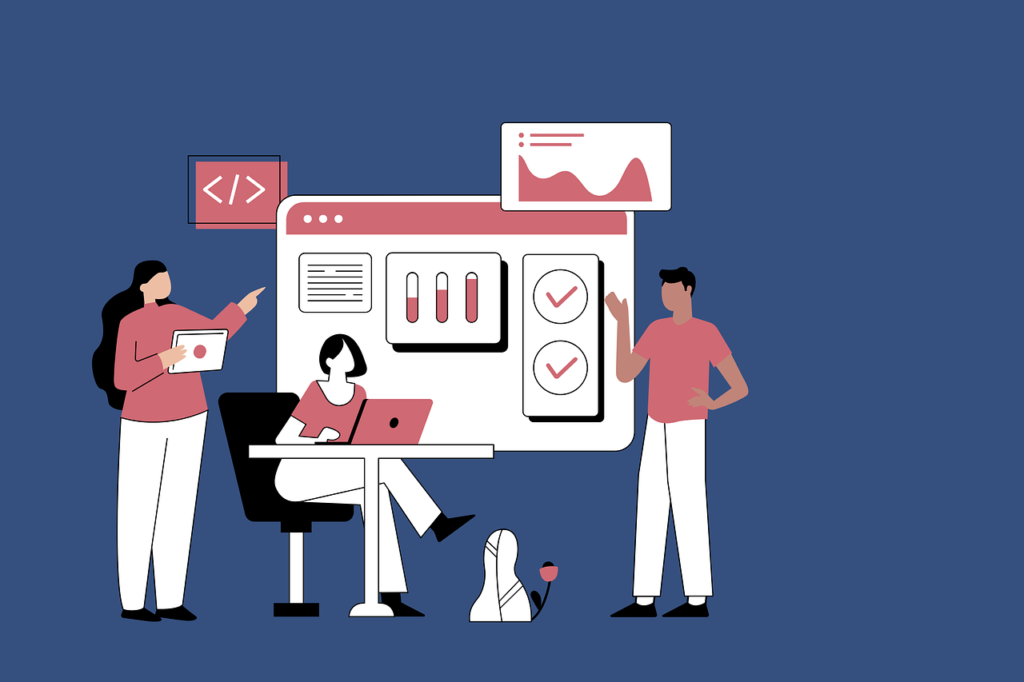In today’s fast-moving digital landscape, nurturing leads effectively is both an art and a science. Personalization is no longer a luxury—it’s an expectation. But how can businesses maintain that personal touch when dealing with hundreds, thousands, or even millions of leads? The answer lies in automation tools designed to scale personalization.
These tools don’t just save time; they empower businesses to build meaningful connections with prospects at every stage of the customer journey. Let’s explore how advanced automation tools can help you nurture leads at scale without losing the personal touch.
Step 1: Understanding Lead Nurturing Automation
Lead nurturing is about guiding prospects through your sales funnel with timely, relevant communication. While one-on-one interactions are ideal, they’re impractical at scale. Automation bridges this gap by using technology to replicate that personal touch across thousands of leads.
Why Automation is Essential for Scaling Personalization
For example, automation tools can segment your audience based on behavior, preferences, or demographics and deliver tailored content to each segment. A prospect who downloads an e-book might receive a follow-up email offering a related webinar, while a lead visiting your pricing page might get a personalized invitation for a product demo.
Automation ensures every lead gets the attention they need, at the right time, without requiring constant manual effort.
The Role of AI in Enhancing Personalization
AI is the secret sauce behind advanced automation tools. It analyzes data in real time, identifies patterns, and predicts what your leads need next. This allows you to create experiences that feel personal, even though they’re automated.
For instance, AI can track a lead’s interactions with your website and emails, then suggest the next best action—like sending a case study relevant to their industry or offering a time-limited discount. By anticipating needs, AI helps nurture leads more effectively, increasing engagement and conversion rates.
AI-powered automation turns cold prospects into warm leads by delivering value-driven experiences at scale.
Combining Automation with Human Insight
While automation is powerful, it shouldn’t completely replace human input. Advanced tools work best when guided by a solid strategy and real-world insights. For instance, your sales team’s feedback on common objections can inform the messaging used in automated workflows.
Think of automation as an extension of your team. It handles repetitive tasks—like sending follow-ups or segmenting leads—so your team can focus on higher-value activities, like closing deals or building relationships.
When combined with human expertise, automation becomes a powerful tool for scaling personalized lead nurturing.
Step 2: Choosing the Right Automation Tool for Your Needs

Before diving into tools, take a step back to define your goals. Are you looking to improve email engagement? Streamline your sales handoffs? Reduce lead drop-offs? Understanding your priorities will help you choose a tool that aligns with your needs.
Identifying Your Goals and Challenges
For example, if your goal is to improve email click-through rates, look for platforms with robust email personalization features. If lead scoring is a challenge, prioritize tools with AI-driven scoring capabilities.
Choosing a tool without a clear goal is like buying a car without knowing where you’re going—it’s unlikely to take you where you need to be.
Evaluating Key Features
When selecting an automation tool, focus on features that enable advanced personalization. Look for capabilities like dynamic content, behavior tracking, segmentation, and AI-driven recommendations. Integration with your CRM and other marketing platforms is also crucial.
For example, tools like HubSpot, Marketo, and ActiveCampaign offer dynamic workflows that adapt to each lead’s journey. They can send different messages based on whether a lead opens an email, clicks a link, or visits your site.
The right features ensure your tool doesn’t just automate tasks but enhances the quality of your lead nurturing efforts.
Balancing Scalability and Simplicity
Not all tools are created equal when it comes to scaling. While some platforms are great for small businesses, others are designed to handle enterprise-level complexity. Choose a tool that can grow with your business without becoming overly complicated.
For instance, a growing company might start with ActiveCampaign for its simplicity and transition to Marketo as its needs expand. This progression ensures you’re not overwhelmed by unnecessary features early on but have room to scale later.
Scalable tools future-proof your lead nurturing strategy, ensuring long-term success.
Step 3: Building Automated Workflows for Personalization

To create effective workflows, start by mapping your customer journey. Identify key touchpoints where leads interact with your brand and consider how you can add value at each stage.
Mapping the Customer Journey
For example, if a lead subscribes to your newsletter, they might receive a welcome email series introducing your brand. If they engage with educational content, follow up with related resources or an invitation to a webinar. Each step should feel like a natural progression in their journey.
Mapping the journey ensures your workflows are purposeful and aligned with lead expectations.
Creating Dynamic and Adaptive Workflows
Dynamic workflows adapt to each lead’s behavior, ensuring they receive relevant content at every stage. For example, if a lead opens an email but doesn’t click the link, the system might send a follow-up with a different call-to-action. If they do click, the next step could be an invitation to book a call.
These workflows eliminate the one-size-fits-all approach, tailoring every interaction to the lead’s needs. Tools like Pardot and HubSpot excel at creating dynamic workflows that adjust in real time.
Adaptive workflows keep leads engaged, moving them closer to conversion.
Testing and Refining Workflows
Even the best workflows need fine-tuning. Use A/B testing to experiment with different messages, timings, or offers. For instance, you might test whether leads respond better to emails sent in the morning versus the afternoon or whether a casual tone outperforms a professional one.
AI tools can analyze the results and recommend adjustments, ensuring your workflows become more effective over time. Regular testing keeps your strategy fresh and responsive to changing audience preferences.
Continuous refinement ensures your workflows deliver maximum impact.
Step 4: Leveraging AI for Smarter Lead Scoring

Lead scoring helps prioritize prospects based on their likelihood to convert. AI takes this a step further by analyzing a lead’s behavior, demographics, and engagement history to assign scores dynamically.
Automating Lead Qualification
For example, a lead who frequently visits your site and downloads resources might receive a high score, while one who only opens occasional emails might score lower. These insights help your sales team focus on high-priority leads, improving efficiency.
AI-driven scoring ensures no valuable lead gets overlooked.
Predicting Conversion Likelihood
AI can predict not just whether a lead will convert but when they’re most likely to take action. For instance, if a lead’s behavior mirrors that of previous high-converting customers, AI can flag them as ready for a direct sales call or a special offer.
These predictive insights allow you to time your interactions perfectly, increasing the likelihood of conversion. Tools like Leadspace and Salesforce Einstein specialize in predictive lead scoring.
Predictive capabilities turn data into actionable insights, accelerating your sales process.
Aligning Marketing and Sales Efforts
Lead scoring isn’t just for marketing—it’s a bridge to sales. By sharing scoring insights, your marketing and sales teams can align their strategies, ensuring leads are handled appropriately at every stage.
For example, if a lead reaches a high score, marketing might notify sales to follow up immediately. If the score is moderate, the lead might remain in a nurturing campaign until they’re ready to engage.
Alignment ensures a seamless transition from marketing to sales, enhancing the overall customer experience.

Related: Check out our free tools:

Step 5: Measuring Success and Scaling Your Efforts
Automation tools provide detailed analytics to track the success of your campaigns. Metrics like email open rates, click-through rates, and conversion rates offer insights into what’s working and what needs improvement.
Tracking Key Metrics
For example, if a specific email in your workflow underperforms, you can tweak its subject line, content, or timing to boost engagement. Regularly reviewing these metrics ensures your campaigns stay optimized.
Data-driven decisions keep your lead nurturing strategy effective and scalable.
Scaling Personalization Across Channels
Email is just one piece of the puzzle. Advanced automation tools allow you to extend personalization across multiple channels, from social media to SMS. For example, a lead who engages with an email might receive a follow-up ad on LinkedIn or a personalized text message.
This multi-channel approach creates a cohesive experience, ensuring your brand stays top-of-mind wherever your leads are. Tools like Klaviyo and ActiveCampaign excel at integrating cross-channel personalization.
Scaling across channels amplifies your reach and impact, driving better results.
Embracing Continuous Improvement
The best lead nurturing strategies evolve over time. Use AI insights, feedback from your team, and changes in audience behavior to refine your approach. For example, if AI identifies a new trend—like increased engagement with video content—you can adjust your workflows to incorporate it.
Continuous improvement keeps your campaigns relevant and effective, ensuring long-term success.
Step 6: Creating Seamless Integrations for Unified Experiences

For automation to truly shine, it needs to integrate seamlessly with your existing tech stack. This means connecting your email marketing platform, CRM, analytics tools, and other key systems. The goal is to create a unified ecosystem where data flows freely, enabling advanced personalization across all touchpoints.
Connecting Automation Tools to Your Tech Stack
For instance, integrating your CRM (like Salesforce or HubSpot) with an automation tool ensures that lead activity—like email clicks or website visits—automatically updates in real time. This enables precise segmentation and ensures that your workflows stay relevant based on the latest information.
When your tools work together, automation becomes smarter, and lead nurturing becomes frictionless.
Bridging Marketing and Sales Systems
Automation tools should act as a bridge between marketing and sales. By syncing lead scores, behavioral data, and campaign insights between the two teams, you can create a unified approach to engaging leads.
For example, when a lead reaches a high score, your automation platform can alert the sales team via the CRM, complete with context about their activity. Sales reps can then use this information to craft personalized outreach, ensuring a smooth handoff from marketing to sales.
A well-integrated system eliminates silos and fosters collaboration, boosting conversion rates.
Ensuring Real-Time Updates Across Channels
In the fast-paced world of digital marketing, delays can cost you conversions. Advanced automation tools ensure that updates happen in real time, whether it’s tracking lead behavior or adjusting workflows based on new data.
For instance, if a lead downloads a whitepaper, your automation system can immediately update their profile, adjust their lead score, and trigger the next step in their workflow—like sending a follow-up email or notifying your sales team. This responsiveness ensures that every action feels timely and relevant.
Real-time integrations keep your campaigns agile and your leads engaged.
Step 7: Using Predictive AI to Stay Ahead of Lead Expectations

Predictive AI doesn’t just react to lead behavior—it anticipates it. By analyzing historical data, AI can forecast trends and recommend proactive actions. For example, it might predict that leads engaging with specific content are likely to request a demo within the next week, prompting you to prepare a targeted campaign.
Identifying Future Opportunities
This forward-thinking approach ensures that you’re always a step ahead, delivering value before leads even realize they need it. Tools like Salesforce Einstein and Marketo Engage excel at leveraging predictive insights for advanced lead nurturing.
Anticipating needs helps you build trust and convert leads more effectively.
Adjusting Campaigns Dynamically
Predictive AI allows your campaigns to evolve in real time based on new information. For instance, if a lead’s activity suggests they’ve shifted from the research phase to the decision phase, your automation system can adjust their workflow to prioritize closing strategies.
This might mean replacing educational emails with case studies, testimonials, or special offers. The ability to pivot campaigns dynamically ensures that your messaging stays relevant and impactful.
Dynamic adjustments keep your campaigns aligned with lead intent, maximizing engagement and conversion.
Optimizing for Long-Term Success
Predictive AI isn’t just about immediate conversions—it’s about long-term growth. By analyzing customer lifetime value (CLV) and other metrics, AI can help you identify which leads are most likely to become loyal customers. You can then prioritize these leads with tailored nurturing strategies.
For example, high-value prospects might receive VIP treatment, such as personalized check-ins or exclusive content. This ensures that your efforts focus not only on acquiring customers but also on retaining and upselling them.
Optimizing for long-term value turns your lead nurturing strategy into a sustainable growth engine.
Step 8: Measuring ROI and Scaling Your Success

One of the biggest advantages of automation is its measurable impact. Track metrics like conversion rates, email engagement, and time-to-close to gauge the effectiveness of your campaigns. Advanced tools often provide dashboards that visualize this data, making it easy to identify trends and areas for improvement.
Calculating the Impact of Automation
For example, if automation reduces your average response time from 24 hours to 2 hours, you can directly correlate this improvement with higher conversion rates. These insights allow you to demonstrate the ROI of your lead nurturing efforts.
Quantifying success ensures you can justify further investment in automation.
Scaling Across New Markets or Segments
As your business grows, you may want to expand into new markets or target new customer segments. Automation tools make this process seamless by enabling you to replicate and adapt successful workflows for different audiences.
For instance, if your current campaign targets mid-sized businesses, you can use your automation platform to create a similar workflow for enterprise leads, adjusting the messaging and touchpoints as needed. This scalability ensures consistent results across all segments.
Scaling with automation allows you to grow efficiently without sacrificing personalization.
Innovating Continuously
The digital landscape evolves rapidly, and so should your lead nurturing strategy. Use the insights gathered from your campaigns to test new ideas, experiment with advanced features, and push the boundaries of what’s possible.
For example, explore innovations like interactive email content, AI-generated copy, or integration with emerging platforms like WhatsApp or Slack. These innovations keep your campaigns fresh and your audience engaged.
Continuous innovation ensures your automation strategy stays ahead of the curve, driving sustained success.
Conclusion: Transforming Lead Nurturing with Advanced Automation
Advanced automation tools have redefined what’s possible in lead nurturing. By combining AI-driven insights, dynamic workflows, and seamless integrations, businesses can deliver personalized experiences at scale without overwhelming their teams. The result? Stronger engagement, higher conversions, and a more efficient sales process.
The key to success lies in choosing the right tools, implementing purposeful strategies, and continuously refining your approach. Automation isn’t just about doing more with less—it’s about doing better, at scale.
Start leveraging advanced automation tools today, and watch as your lead nurturing efforts transform into a powerful driver of growth. The future of marketing is personal, scalable, and powered by automation—and it’s here for the taking.
READ NEXT:
- Are Vanity Metrics Killing Your Marketing Efficiency? Here’s What to Track Instead
- Pinpointing Digital Marketing ROI: Why Your Metrics Aren’t Telling the Full Story
- Unlocking Real ROI in Digital Marketing: The Hidden Costs Draining Your Budget
- How Misaligned Marketing Funnels Are Blocking Your ROI Potential
- Best Digital Marketing Agency In Santa Ana, California
- Best Digital Marketing Agency In San Francisco, California





















